Number 205 High Street is the former Greyhound public house. The building is set slightly back from the road and occupies the site of an earlier public house of the same name. A photograph of The Greyhound taken in 1873 shows a three-storey Georgian-style building with a large sign overhanging the pavement. The Greyhound was first recorded in 1797; this may well have been the year it was built.
A plaque documenting the history of the building.
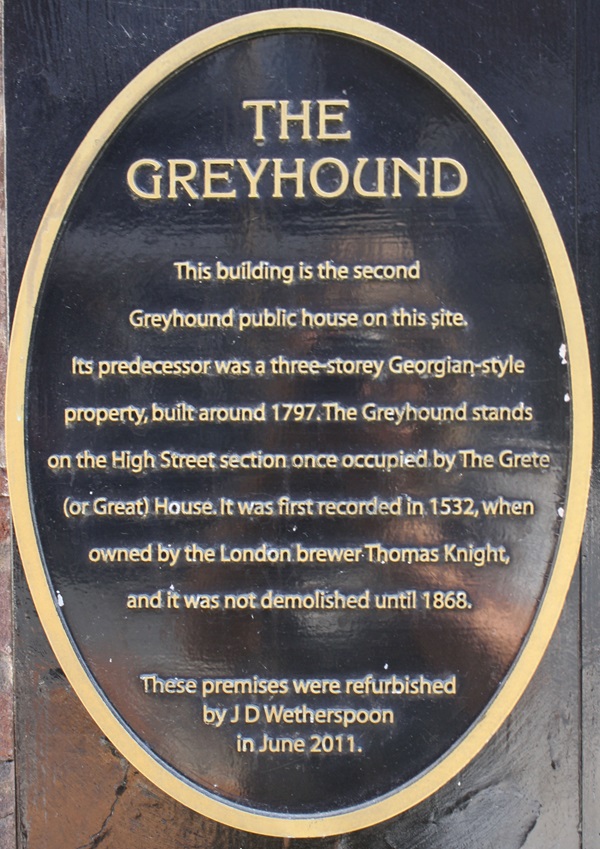
The plaque reads: This building is the second Greyhound public house on this site. Its predecessor was a three-storey Georgian-style property built around 1797. The Greyhound stands on the once occupied by The Grete (or Great) house. Owned by the London brewer Thomas Knight, and not was not demolished until 1868.
These premises were refurbished by J D Wetherspoon in June 2011.
A photograph and text about The Greyhound.

The text reads: The building that you are now in is the second Greyhound public house on this site. Its predecessor was a three-storey Georgian-style building, with a large sign overhanging the pavement. The earlier Greyhound was first recorded in 1797.
The Greyhound is on the east side of High Street, between the Swan & Mitre and the former Royal Bell Hotel. Until the end of the 17th century, this part of High Street was covered by The Grete House, its outbuildings and several acres of land.
The house was first recorded in 1532, when it was owned by a London brewer, Thomas Knight. In 1757, John Hawkesworth and his wife, Mary, moved in. Hawkesworth was a leading literary figure of his day and lived here until his death in 1773.
A photograph and text about Dame Antoinette Sibley.

The text reads: Dame Antoinette Sibley retired in 1988. She went on to rehearse Principals of the Royal Ballet. In 1991, following the death of Margot Fonteyn, she was elected President of the Royal Academy of Dance.
In 1973, she was appointed CBE and, in 1996, a Dame. Her publications include Sibley and Dowell, Reflections of a Ballerina and Antoinette Sibley.
Above: Antoinette Sibley and Anthony Dowell in ‘Triad’.
A photograph of Dame Antoinette Sibley, by Mayotte Magnus, September 1977.

A photograph of Antoinette Sibley in ‘Le Baiser de la Fee’.

A photograph of Sibley and Dowell in ‘Thais’.
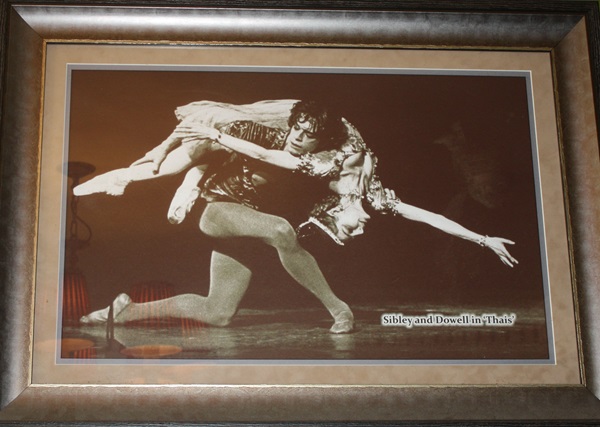
Photographs and text about Dame Antoinette Sibley.
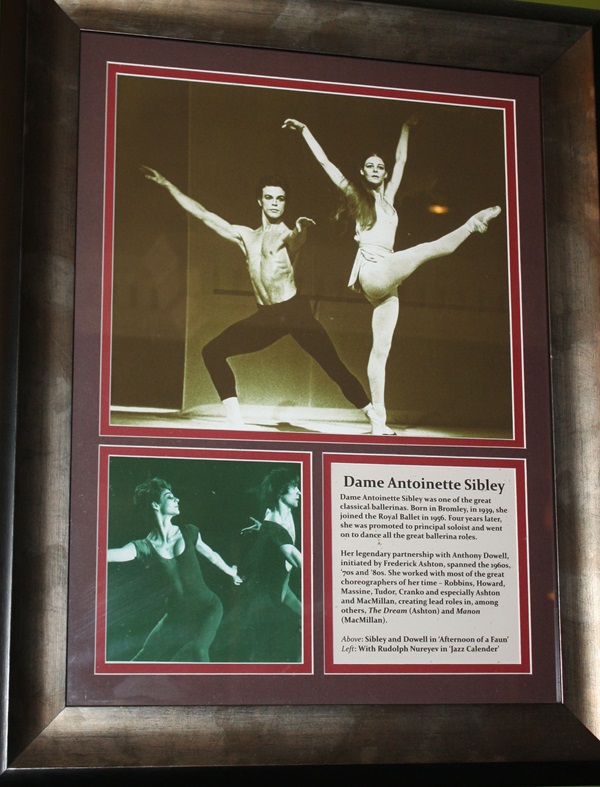
The text reads: Dame Antoinette Sibley was one of the great classical ballerinas. Born in Bromley, in 1939, she joined the Royal Ballet in 1956. Four years later, she was promoted to principal soloist and went on to dance all the great ballerina roles.
Her legendary partnership with Anthony Dowell, initiated by Frederick Ashton, spanned the 1960s, 70s and 80s. She worked with most of the great choreographers of her time - Robbins, Howard, Massine, Tudor, Cranko and especially Ashton and MacMillan, creating lead roles in, among others, The Dream (Ashton) and Manon (MacMillan).
Above: Sibley and Dowell in ‘Afternoon of a Faun'
Left: With Rudolph Nureyev in Jazz Calendar'.
Photographs, illustrations and text about Sir Joseph Wilson Swan.
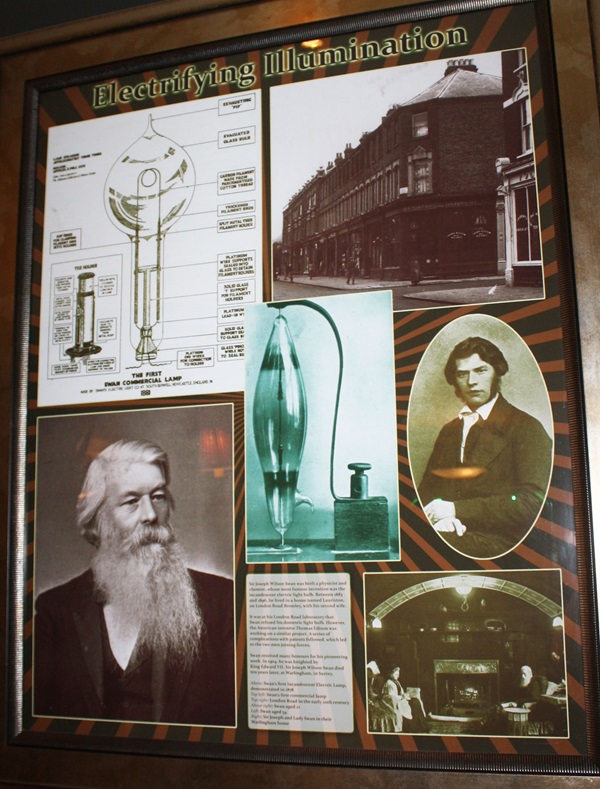
The text reads: Sir Joseph Wilson Swan was both a physicist and chemist, whose most famous invention was the incandescent electric light bulb. Between 1883 and 1896, he lived in a house named Lauriston on London Road Bromley, with his second wife.
It was at his London Road laboratory that Swan refined his domestic light bulb. However, the American inventor Thomas Edison was working on a similar project. A series of complications with patents followed, which led to the two men joining forces.
Swan received many honours for his pioneering work. In 1904, he was knighted by King Edward VII. Sir Joseph Wilson Swan died ten years later, at Warlingham, in Surrey.
Above: Swan's first Incandescent Electric Lamp, demonstrated in 1878
Top left: Swan's first commercial lamp
Top right: London Road in the early 20th century
Above right: Swan aged 21
Left: Swan aged 54
Right: Sir Joseph and Lady Swan in their Warlingham home.
Prints, photograph and text about lords of the manor.

The text reads: In AD682 Ethelbert, King of Kent, granted land to form the manor of Bromley. It was part of the ancient administrative area known as ‘Sutton at Hone’. For the next 1,000 years the manor was held by the Bishops of Rochester.
The bishops built a palace here, which they used as a staging post on the way to London. They also established a market place here, that eventually turned the quiet village into a busy trading centre.
Top: The Bishop's Palace, built by Bishop Thomas in 1775
Right: Bishop Thomas Spratt, who lived in Bromley Palace between 1684 -1713. He may have been the Spratt in the nursery rhyme who "could eat no fat"
Above: George Murray, the 96th Bishop to Rochester (from 1827-1860) and the last to live in Bromley.
A print and text about King Ethelbert of Kent.
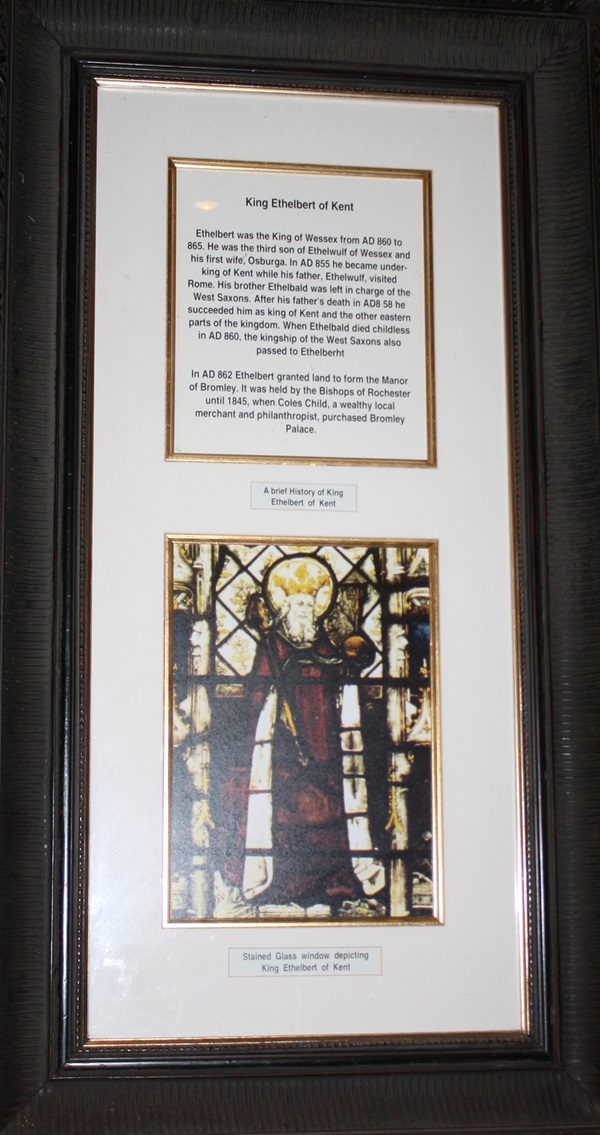
The text reads: Ethelbert was the King of Wessex from AD860 to 865. He was the third son of Ethelwulf of Wessex and his first wife, Osburga. In AD855 he became under-king of Kent while his father, Ethelwulf, visited Rome. His brother Ethelbald was left in charge of the West Saxons. After his father's death in AD858 he succeeded him as king of Kent and the other eastern parts of the kingdom. When Ethelbald died childless in AD860, the kingship of the West Saxons also passed to Ethelbert.
In AD862 Ethelbert granted land to form the Manor of Bromley. It was held by the Bishops of Rochester until 1845, when Coles Child, a wealthy local merchant and philanthropist, purchased Bromley Palace.
A copy of a page from the manuscript of Ethelbert’s law code, and a photograph of the statue of King Ethelbert of Kent at Canterbury Cathedral.

Photographs, prints and text about Richmal Crompton.
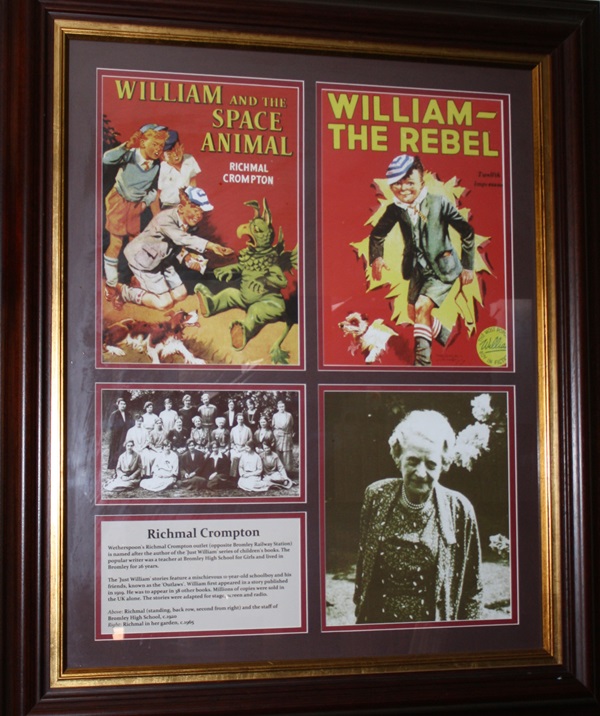
The text reads: Wetherspoon's Richmal Crompton outlet (opposite Bromley Railway Station) is named after the author of the Just William series of children's books. The popular writer was a teacher at Bromley High School for Girls and lived in Bromley for 26 years.
The Just William stories feature a mischievous 11-year-old schoolboy and his friends, known as the Outlaws. William first appeared in a story published in 1919. He was to appear in 38 other books. Millions of copies were sold in the UK alone. The stories were adapted for stage, screen and radio.
Above: Richmal (standing, back row, second from right) and the staff of
Bromley High School, c1920
Right: Richmal in her garden, c1965.
Photographs and text about Elfin Cottage.

The text reads: Enid Blyton was one of the most successful children's writers of the 20th century. Between 1926 and 1929, she lived at Shortlands Road, which she named Elfin Cottage. She also lived at several other addresses in the Borough of Bromley.
Enid Blyton is best known for the Noddy stories and as the author of the ‘Secret Seven’ and ‘Famous Five’ series of books. She was a prolific writer, completing more than 600 books, as well as songs, poems and plays.
Top right: Enid's first book, 1922
Top left: Enid married divorcee High Pollack in 1924. The couple's first home, in 1926, was Elfin Cottage, where Enid was photographed beside the pool in the garden
Left: Enid with her leading boy, who played Noddy in her pantomime ‘Noddy in Toyland'
Above: Enid looking through illustrations for her Noddy books.
Photographs and text about HG Wells.

The text reads: Widely regarded as the father of science fiction, HG Wells was born on the west side of Market Place, in 1866. His birthplace was above the china shop run by his father. Wells senior also sold cricket gear and was a professional with the West Kent Cricket Club for a number of years and the Kent County side for two seasons. Wells junior attended Mrs Knott's school in South Street.
He began his working life as a draper's apprentice which later helped him write, Mr Polly and Kipps. Wells also achieved everlasting fame with The Time Machine, The Invisible Man and The War of the Worlds. For nearly twenty years there was a mural in Market Square featuring his life and works.
Top left: HG Wells, c1876
Top right: His father, Joseph Wells
Right: Wells the young student under TH Huxley at the South Kensington School of Science the year he published his autobiography
Above: ‘Man of the World’ - Wells in 1934, the year he published his autobiography.
A photograph of High Street, Bromley c1960.

A photograph of High Street, Bromley, c1985.
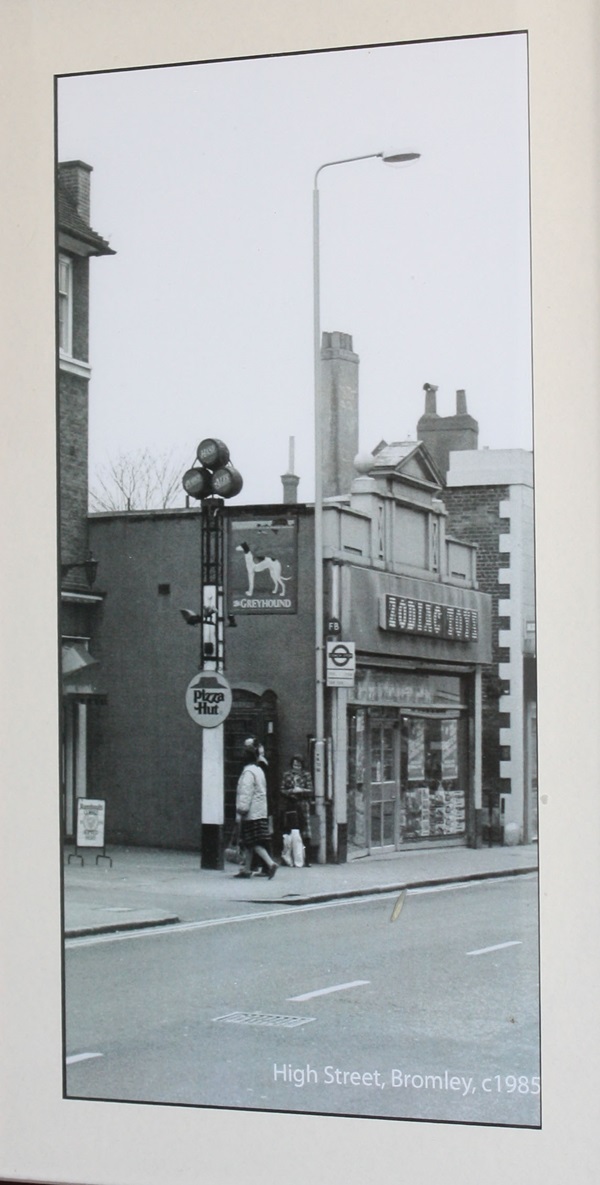
An illustration of Bromley College, c1797.
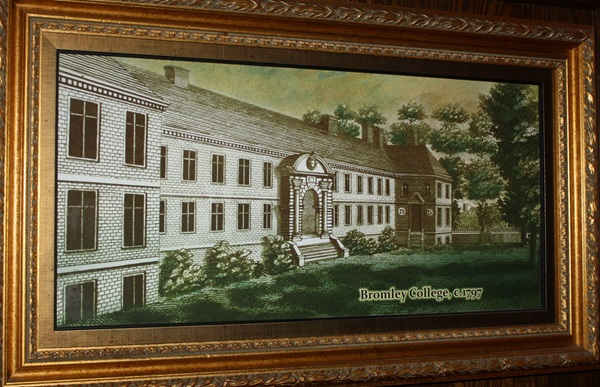
A photograph of The Bell House, c1890, mentioned in Jane Austen’s Pride and Prejudice, where Lade Catherine de Burgh recommends it.

A photograph of The Star and Garter Inn (left), looking south, down Upper High Street, towards this site, before it was rebuilt in 1898 and given the prominent turret that can be seen.
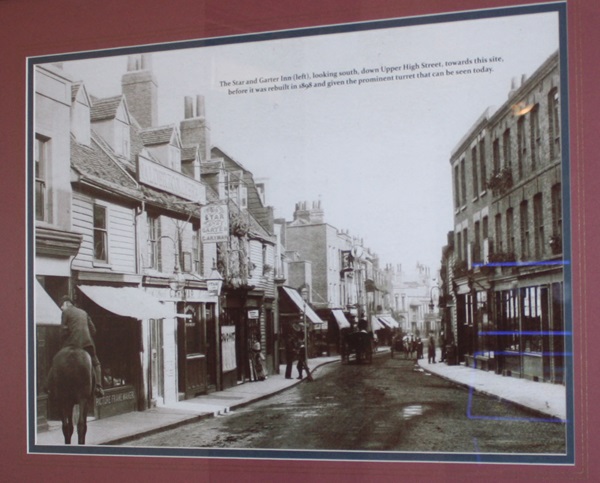
An acrylic painting entitled Kinky Boots by local artist David Ingleton.
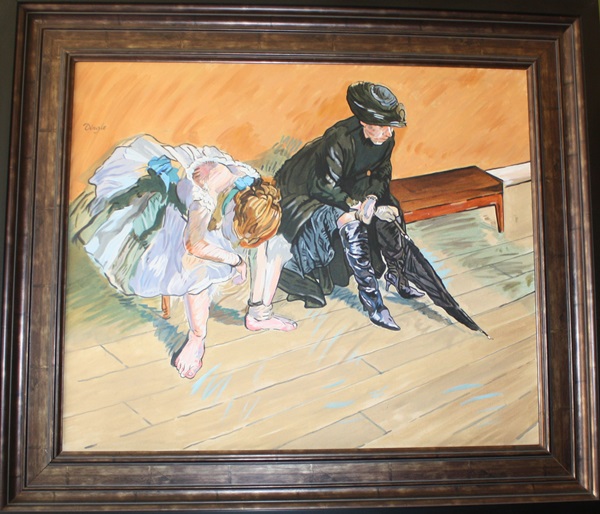
David studied at St Martins College of Art and Design and was born in Bromley 1959.
External photograph of the building – main entrance.
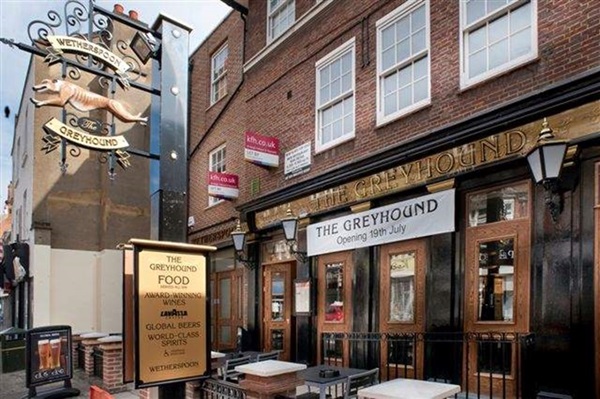
If you have information on the history of this pub, then we’d like you to share it with us. Please e-mail all information to: pubhistories@jdwetherspoon.co.uk